50g
Showing 1751–1800 of 1859 results
-
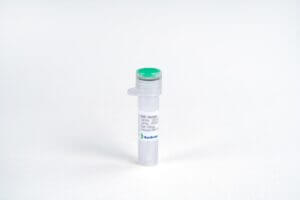
TIM-3 Fc Chimera, Human
$237.19 Add to cart View Product DetailsT cell Ig- and mucin-domain-containing molecules (TIMs) are a family of transmembrane proteins expressed by various immune cells. TIM-3 is an inhibitory molecule that is induced following T cell activation. TIM-3 is expressed by exhausted T cells in the settings of chronic infection and cancer, and tumor-infiltrating T cells that co-express PD-1 and TIM-3 exhibit the most severe exhausted phenotype. Tumor-infiltrating dendritic cells also express TIM-3. TIM-3 expression on DCs was found to suppress innate immunity by reducing the immunogenicity of nucleic acids released by dying tumor cells. Research studies show that heterodimerization of TIM-3 with CEACAM-1 is critical for the inhibitory function of TIM-3, and co-blockade of TIM-3 and CEACAM-1 enhanced antitumor responses in a mouse model of colorectal cancer. Its binding to Galectin-9 induces a range of immunosuppressive functions which enhance immune tolerance and inhibit anti-tumor immunity. TIM-3 ligation attenuates CD8+ and Th1 cell responses and promotes the activity of Treg and myeloid derived suppressor cells. In addition, dendritic cell-expressed TIM-3 dampens inflammation by enabling the phagocytosis of apoptotic cells and the cross-presentation of apoptotic cell antigens.
-

Tin(II) Chloride Dihydrate
$60.38 Add to cart View Product DetailsMolecular Formula : Cl2 Sn . 2 H2 O
-
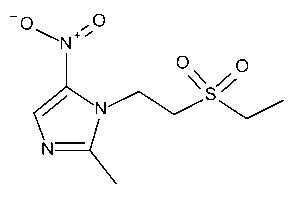
Tinidazole
$64.69 Add to cart View Product DetailsMolecular Formula : C8 H13 N3 O4 S
-
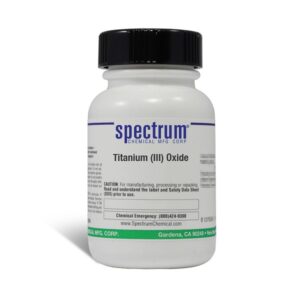
Titanium (III) Oxide, -100 Mesh
$678.24 Add to cart View Product DetailsTitanium (III) Oxide, -100 Mesh
-

TNF R I, Human
$155.25 Add to cart View Product DetailsTNF Receptor Type I, is also known as TNF R-p55/p60 and TNFRSF1A. It is a type I transmembrane protein member of the TNF receptor superfamily. It is expressed in most cell types. Binding of either TNF-α or TNF-β to TNF-R1 initiates a signal transduction pathway that results in the activation of the transcription factor NF-κB, whose target genes are involved in the regulation of inflammatory responses, and, in certain cells, induce apoptosis. TNF-R1 is essential for proper development of lymph node germinal centers and Peyer’s patches and for combating intracellular pathogens such as Listeria. It is stored in the Golgi and translocates to the cell surface following proinflammatory stimuli.
-

TNF-α (80-235aa), Mouse
$99.19 Add to cart View Product DetailsTumor Necrosis Factor-Alpha (TNF-alpha) plays a major role in growth regulation, differentiation, inflammation, viral replication, tumorigenesis, and autoimmune disease. Besides inducing hemorrhagic necrosis of tumors, TNF has been found to be involved in tumorigenesis, tumor metastasis, viral replication, septic shock, fever, inflammation, and autoimmune diseasesuch as Crohn’s disease, rheumatoid arthritis and graft-versus-host disease. TNF alpha-1a is a potent lymphoid factor that exerts cytotoxic effects on a wide range of tumor cells and certain other target cells.
-

TNF-α, Bovine
$155.25 Add to cart View Product DetailsTumor Necrosis Factor-Alpha (TNF-α) plays a major role in regulating growth, differentiation, inflammation, viral replication, tumorigenesis, and autoimmune diseases. TNF alpha-1a is a potent lymphoid factor that exerts cytotoxic effects on a wide range of tumor cells. In addition to inducing hemorrhagic necrosis of tumors, studies indicate TNF is involved in tumor igenesis, tumor metastasis, viral replication, septic shock, fever, inflammation, Crohn’s disease, rheumatoid arthritis and graft-versus-host disease.
-

TNF-α, His, Human
$94.88 Add to cart View Product DetailsTumor Necrosis Factor-Alpha (TNF-alpha) plays a major role in growth regulation, differentiation, inflammation, viral replication, tumorigenesis, and autoimmune diseases. Besides inducing hemorrhagic necrosis of tumors, TNF has been found to be involved in tumorigenesis, tumor metastasis, viral replication, septic shock, fever, inflammation, and autoimmune diseases including Crohn’s disease, and rheumatoid arthritis as well as graft-versus-host disease. TNF alpha-1a is a potent lymphoid factor that exerts cytotoxic effects on a wide range of tumor cells and certain other target cells.
-

TNF-α, Human
$90.56 Add to cart View Product DetailsTumor Necrosis Factor-alpha (TNF-a) is a homotrimer with a subunit molecular mass of 17.3 kDa. Tumor Necrosis Factor-alpha(TNF-a) plays a major role in growth regulation, differentiation, inflammation, viral replication, tumorigenesis, and autoimmune diseases; and in viral, bacterial, fungal, and parasitic infections. Besides inducing hemorrhagic necrosis of tumors, TNF has been found to be involved in tumorigenesis, tumor metastasis, viral replication, septic shock, fever, inflammation, and autoimmune diseases including Crohn’s disease, and rheumatoid arthritis as well as graft-versus-host disease.
-

TNF-α, Human (P. pastoris-expressed)
$94.88 Add to cart View Product DetailsTumor Necrosis Factor-Alpha (TNF-alpha) plays a major role in growth regulation, differentiation, inflammation, viral replication, tumorigenesis, and autoimmune diseases. Besides inducing hemorrhagic necrosis of tumors, TNF has been found to be involved in tumorigenesis, tumor metastasis, viral replication, septic shock, fever, inflammation, and autoimmune diseases including Crohn’s disease, and rheumatoid arthritis as well as graft-versus-host disease. TNF alpha-1a is a potent lymphoid factor that exerts cytotoxic effects on a wide range of tumor cells and certain other target cells.
-
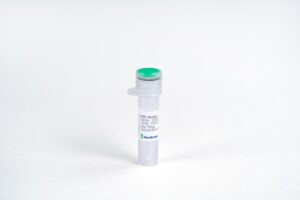
TNF-α, Porcine
$90.56 Add to cart View Product DetailsTumor Necrosis Factor-Alpha (TNF-alpha) plays a major role in growth regulation, differentiation, inflammation, viral replication, tumorigenesis, and autoimmune disease. Besides inducing hemorrhagic necrosis of tumors, TNF has been found to be involved in tumorigenesis, tumor metastasis, viral replication, septic shock, fever, inflammation, and autoimmune disease including Crohn’s disease, rheumatoid arthritis and graft-versus-host disease. TNF alpha-1a is a potent lymphoid factor that exerts cytotoxic effects on a wide range of tumor cells and certain other target cells.
-

TNF-α, Rat
$133.69 Add to cart View Product DetailsTumor Necrosis Factor-Alpha (TNF-alpha) plays a major role in growth regulation, differentiation, inflammation, viral replication, tumorigenesis, and autoimmune disease. Besides inducing hemorrhagic necrosis of tumors, TNF has been found to be involved in tumorigenesis, tumor metastasis, viral replication, septic shock, fever, inflammation, and autoimmune disease including Crohn’s disease, rheumatoid arthritis and graft-versus-host disease. TNF alpha-1a is a potent lymphoid factor that exerts cytotoxic effects on a wide range of tumor cells and certain other target cells.
-

TNF-β, Human
$155.25 Add to cart View Product DetailsTNF is secreted by macrophages, monocytes, neutrophils, T-cells, NK-cells following their stimulation by bacterial LPS. Cells expressing CD4 secrete TNF-alpha while CD8 cells secrete little or no TNF-alpha. The synthesis of TNF-alpha is induced by many different stimuli including interferons, IL2, GM-CSF. TNF-β is a potent mediator of inflammatory and immune responses. It belongs to the TNF family of ligands, and signals through TNFR1 and TNFR2. TNF-β is produced by activated T and B lymphocytes, and has similar activities to TNF-α. It mediates a large variety of inflammatory, immunostimulatory, and antiviral responses.
-

Tobramycin Sulfate, USP
$907.99 Add to cart View Product DetailsTobramycin Sulfate, USP
-
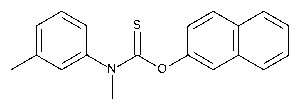
Tolnaftate
$281.18 Add to cart View Product DetailsMolecular Formula : C19 H17 N O S
-
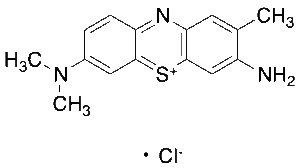
Toluidine Blue O
$195.79 Add to cart View Product DetailsMolecular Formula : C15 H16 N3 S . Cl
-
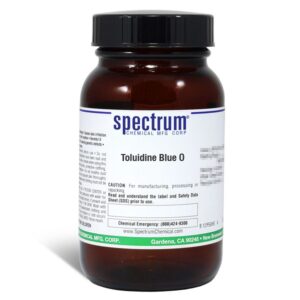
Toluidine Blue O
$291.78 Add to cart View Product DetailsToluidine Blue O
-
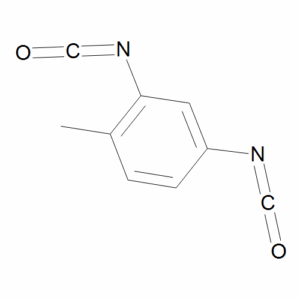
Tolylene 2,4-Diisocyanate
$90.56 Add to cart View Product DetailsMolecular Formula : C9 H6 N2 O2
-

Tosylmethyl Isocyanide
$637.39 Add to cart View Product DetailsMolecular Formula : C9H9NO2S
-

TPO, His, Human
$543.38 Add to cart View Product DetailsThrombopoietin (TPO) is a glycoprotein hormone which belongs to the EPO/TPO family. It produced by the liver and kidney which regulates the production of platelets. TPO stimulates the production and differentiation of megakaryocytes, the bone marrow cells that bud off large numbers of platelets. Lineage-specific cytokine affects the proliferation and maturation of megakaryocytes from their committed progenitor cells. It acts at a late stage of megakaryocyte development. It may be the major physiological regulator of circulating platelets.
-

TPO, Mouse
$224.25 Add to cart View Product DetailsThrombopoietin (TPO), also known as C-mpl ligand, MGDF and Thpo, is a glycoprotein hormone belonging to the EPO/TPO family. It is expressed mainly in the liver, kidney and skeletal muscle. TPO binds and signals through MLP/C_MPL receptor. It stimulates the proliferation and maturation of megakaryocytes from their committed progenitor cells, and it regulates the production and circulation of platelets. TPO has also been reported to promote the apoptosis of hypoxia-sensitized neurons and to inhibit neuronal differentiation.
-
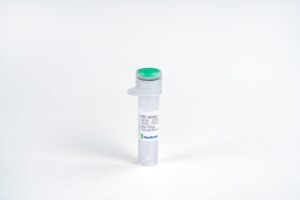
TRAIL, Mouse
$90.56 Add to cart View Product DetailsTNF-related apoptosis-inducing ligand (TRAIL), also known as Tumor Necrosis Factor Super-Family 10 (TNFSF10) or apoptosis 2 ligand (Apo2L), is a pleiotropic cytokine thatbelongs to the TNF superfamily. Full length TRAIL expressed in vivo is a type II transmembrane protein, although the soluble form also exists and functions. TRAIL has four major receptors: two death receptors DR4 and DR5, and two decoy receptors DcR1 and DcR2. TRAIL binds to the death receptors which recruits the FAS-associated death domain and activates caspases 8 and 10 which eventually leads to apoptosis. Because of its antitumor potential, TRAIL is activelystudied as a therapeutic agent. On the other hand, abnormal expression of TRAIL in small arteries can induce the proliferation of smooth muscle cells, thereby increasing vascular remodeling and pulmonary arterial hypertension.
-

TRAIL/Apo2L, Human
$86.25 Add to cart View Product DetailsTRAIL/Apo2L, also known as Tumor Necrosis Factor Super-Family 10 (TNFSF10), is a pleiotropic cytokine thatbelongs to the TNF superfamily. The full length TRAIL expressed in vivo is a Type II transmembrane protein, although the soluble form also exists and functions. TRAIL has four major receptors: two death receptors DR4 and DR5, two decoy receptors DcR1 and DcR2. TRAIL binds to the death receptors, recruits the FAS-associated death domain, activates caspases 8 and 10, and eventually leads to apoptosis. Because of its antitumor potential, TRAIL is actively studied as a therapeutic agent. On the other hand, abnormal expression of TRAIL in small arteries can induce the proliferation of smooth muscle cells, resulting in increasing vascular remodeling and pulmonary arterial hypertension.
-
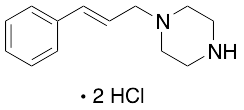
trans-1-Cinnamylpiperazine Dihydrochloride
$83.66 Add to cart View Product DetailsMolecular Formula : C13H18N2 . 2(HCl)
-

trans-2-Pentenoic Acid
$292.39 Add to cart View Product DetailsMolecular Formula : C5H8O2
-
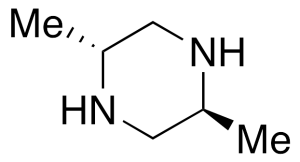
trans-2,5-Dimethylpiperazine
$592.54 Add to cart View Product DetailsMolecular Formula : C6H14N2
-
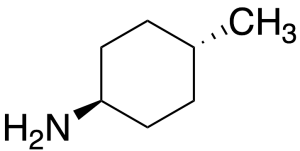
trans-4-Methylcyclohexylamine
$357.94 Add to cart View Product DetailsMolecular Formula : C7H15N
-
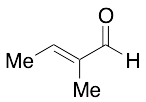
trans-Methyl-2-butenal
$434.70 Add to cart View Product DetailsMolecular Formula : C5H8O
-

trans,trans-Muconic Acid
$1,578.38 Add to cart View Product DetailsMolecular Formula : C6 H6 O4
-

Tri-n-butyl Borate
$77.63 Add to cart View Product DetailsMolecular Formula : C12H27BO3
-

Tri-O-acetyl-D-glucal
$212.18 Add to cart View Product DetailsMolecular Formula : C12 H16 O7
-

Triacetin
$219.94 Add to cart View Product DetailsMolecular Formula : C9 H14 O6
-

Tribromoneopentanol
$155.25 Add to cart View Product DetailsMolecular Formula : C5 H9 Br3 O
-

Tributylamine
$244.95 Add to cart View Product DetailsMolecular Formula : C12 H27 N
-

Trichloroacetaldehyde Hydrate
$91.43 Add to cart View Product DetailsMolecular Formula : C2 H3 Cl3 O2
-
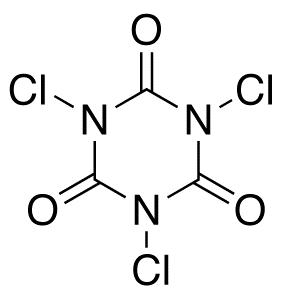
Trichloroisocyanuric Acid
$69.00 Add to cart View Product DetailsMolecular Formula : C3Cl3N3O3
-

Tricine
$71.59 Add to cart View Product DetailsMolecular Formula : C6H13NO5
-
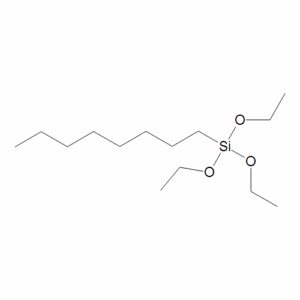
Triethoxy(octyl)silane
$88.84 Add to cart View Product DetailsMolecular Formula : C14 H32 O3 Si
-

Triethyl 2-Phosphonopropionate
$154.39 Add to cart View Product DetailsMolecular Formula : C9H19O5P
-

Triethyl Citrate
$138.86 Add to cart View Product DetailsMolecular Formula : C12 H20 O7
-
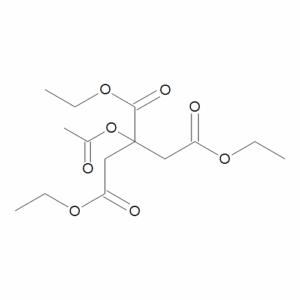
Triethyl O-Acetylcitrate
$253.58 Add to cart View Product DetailsMolecular Formula : C14 H22 O8
-

Triethyl Orthopropionate (Technical Grade)
$56.06 Add to cart View Product DetailsMolecular Formula : C9H20O3
-

Triethylamine
$250.13 Add to cart View Product DetailsMolecular Formula : C6 H15 N
-

Triethylenetetramine Hydrate
$539.93 Add to cart View Product DetailsMolecular Formula : C6 H18 N4 . x(H2 O)
-

Triethylsilane
$93.15 Add to cart View Product DetailsMolecular Formula : C6H16Si
-

Trifluoroacetic Anhydride
$82.80 Add to cart View Product DetailsMolecular Formula : C4 F6 O3
-

Trifluoromethanesulfonic Acid Methyl Ester
$342.41 Add to cart View Product DetailsMolecular Formula : C2 H3 F3 O3 S
-
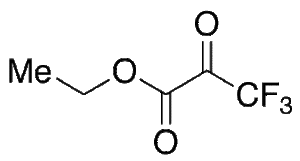
Trifluoropyruvic Acid Ethyl Ester
$463.16 Add to cart View Product DetailsMolecular Formula : C5H5F3O3
-

Triglycol
$182.85 Add to cart View Product DetailsMolecular Formula : C6 H14 O4
-
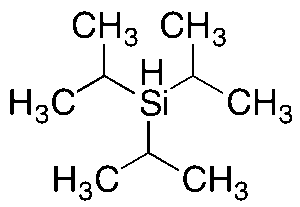
Triisopropylsilane
$116.44 Add to cart View Product DetailsMolecular Formula : C9H22Si






